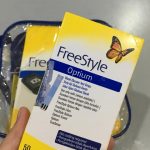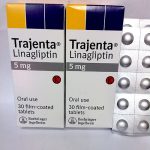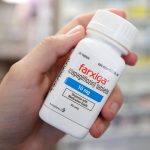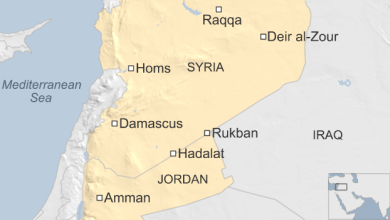Best Ways to Save on Freestyle Libre 3 Sensor
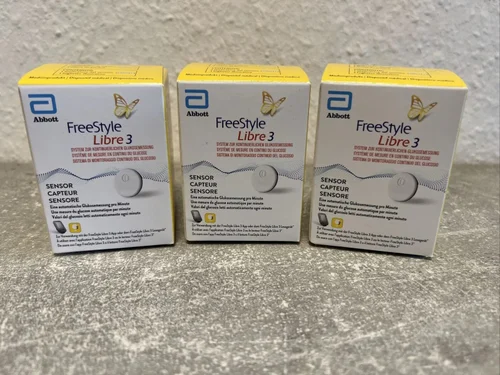
Freestyle Libre 3 Sensor is a continuous glucose monitoring (CGM) system developed by Abbott. It’s designed to help people with diabetes monitor their glucose levels conveniently and continuously without the need for routine fingerstick blood tests.
The Freestyle Libre 3 Sensor consists of a small, discreet sensor worn on the back of the upper arm. This sensor continuously measures glucose levels in the interstitial fluid, which is a thin layer of fluid that surrounds the cells in the tissues just below the skin. It uses a tiny filament inserted just under the skin to measure glucose levels.
Users can scan the sensor using a compatible reader or smartphone to obtain real-time glucose readings, trends, and historical data. This information can help individuals with diabetes make more informed decisions about their diet, exercise, insulin dosing, and overall diabetes management.
The Freestyle Libre 3 Sensor offers several improvements over previous versions, including a smaller size, longer wear duration (up to 14 days), and Bluetooth connectivity for real-time monitoring on compatible smartphones without the need for additional hardware. It offers a convenient and discreet way to monitor glucose levels but comes with a not-so-comfortable price tag.
Medicare Coverage and Third-Party Payor Criteria
Medicare coverage is available for FreeStyle Libre systems if their respective readers are used to review glucose data on some days every month. Criteria from Medicare and other third-party payors apply, and coverage may vary.
Important Information for Customers
Abbott provides support information and customers are responsible for determining appropriate codes, coverage, and payment policies. Abbott does not guarantee third-party coverage or payment and does not reimburse customers for denied claims.
App Compatibility and Sensor Activation
The FreeStyle Libre 3 app is compatible with certain mobile devices and operating systems. A 60-minute warm-up is required when starting the sensor.
Program for Eligible Patients
Eligible patients may receive one FreeStyle Libre 3 sensor at $0 copay if they have a compatible mobile phone operating system. The offer is subject to terms and conditions and may be modified or rescinded by Abbott at any time.
Fingerstick Requirement and Study Data
Fingersticks are required if glucose alarms and readings do not match symptoms or during the first twelve hours after sensor activation. Study data collected with the FreeStyle Libre 14 day system is applicable to the FreeStyle Libre 3 system.
Patient Experience and Notifications
The FreeStyle Libre 3 system offers real-time glucose alarms and notifications when enabled and within range of the reading device.
Cost Comparison and Data Sharing
Based on prescription claims for commercially insured patients, the cost to patients using the FreeStyle Libre 3 system may vary. The LibreLinkUp app facilitates data sharing between patients and healthcare providers but is not intended for dosing decisions.
Connectivity and Prescription Requirement
The user’s device must have internet connectivity for glucose data to automatically upload to LibreView and transfer to connected LibreLinkUp app users. The FreeStyle Libre 3 system requires a prescription.
Best Ways to Save on Freestyle Libre 3 Sensor
Saving money on the Freestyle Libre 3 Sensor, a continuous glucose monitoring system crucial for managing diabetes, requires a strategic approach that considers various factors such as prescription fills, patient assistance programs, and exploring lower-cost alternatives.
Fill a 90-Day Supply to Save
Filling a 90-day supply of the Freestyle Libre 3 Sensor can often result in significant cost savings compared to multiple fills for smaller amounts. Despite the potential for cost reduction, transitioning to a 90-day supply typically necessitates obtaining a new prescription from your healthcare provider. Pharmacies typically cannot transfer a prescription for a 30-day supply into one for a 90-day supply. Additionally, some insurance plans may mandate the use of a mail-order pharmacy for prescriptions exceeding a 30-day supply. Therefore, consulting with your healthcare provider and insurance provider to navigate this process efficiently is crucial in maximizing savings.
Patient assistance programs
Patient assistance programs offered by government organizations, non-profits, and drug manufacturers can play a pivotal role in alleviating the financial burden associated with medication costs. These programs, which are typically free to sign up for, aim to assist individuals who meet their eligibility criteria. Enrollment options vary for each program but can often be completed online, over the phone, or with the assistance of a healthcare provider’s office. It’s important to note that patient assistance programs cannot typically be used concurrently with offers from medication platforms. However, comparing all available options, including manufacturer coupons, copay cards, and patient assistance programs, is recommended to identify the most cost-effective solution.
Research Lower Cost Alternatives
Exploring lower-cost alternatives to the Freestyle Libre 3 Sensor can also contribute to substantial savings. While the Freestyle Libre 3 Sensor may be the preferred choice for many individuals, discussing potential alternatives with your healthcare provider can uncover equally effective medications at lower prices. It’s essential to engage in open dialogue with your healthcare provider to ensure that any proposed alternative does not compromise the effectiveness of your treatment plan. Utilizing resources provided by your healthcare provider and conducting thorough research on related medications can empower you to make informed decisions regarding cost-effective alternatives.
Conclusion
In conclusion, optimizing savings on the Freestyle Libre 3 Sensor necessitates a multifaceted approach that includes filling a 90-day supply, leveraging patient assistance programs, and exploring lower-cost alternatives. By proactively engaging with healthcare providers, insurance companies, and available resources, individuals can mitigate the financial burden associated with diabetes management while ensuring access to essential medication.

